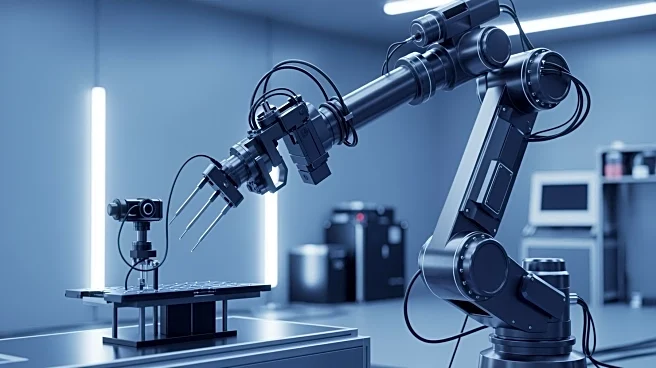What's Happening?
Researchers at Chemnitz University of Technology and the European Centre for Living Technology have developed microrobots using origami membranes that can self-fold into cube-like structures. These microrobots can self-assemble into larger, more complex
formations. The robots are equipped with silicon chiplets for processing and micro-light-emitting diodes (μLEDs) for communication. They also feature rolled organic solar cells for omnidirectional energy harvesting, capable of generating up to 37.5 μW of power. The microrobots can move through water electrolysis and communicate using a green μLED, transmitting data at a rate of up to 1,000 Hz over a distance of 4 mm.
Why It's Important?
This development in microrobot technology could have significant implications for various fields, including medicine, environmental monitoring, and manufacturing. The ability of these microrobots to self-assemble and communicate could lead to advancements in targeted drug delivery systems, where microrobots navigate the human body to deliver medication precisely where needed. In environmental monitoring, these robots could be deployed to collect data in hard-to-reach areas. The technology also demonstrates the potential for cost-effective mass production, which could make advanced robotic systems more accessible across industries.
What's Next?
Further research may focus on enhancing the capabilities of these microrobots, such as increasing their communication range and power efficiency. There may also be efforts to integrate additional functionalities, such as sensors for environmental data collection or tools for micro-manipulation tasks. As the technology matures, regulatory and ethical considerations will need to be addressed, particularly concerning their use in medical applications.













